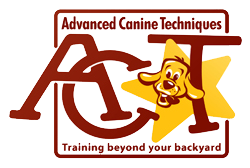The most underutilized training aid – the leash!
When you bring your puppy home, the leash will be your best friend. You can use it to keep track of your puppy in the house, help them with potty training outside, teach them gentle leash pressure for walking, help guide them into the crate and help them learn that staying next to you is a really good thing. I would have them drag a leash for the first 2 months inside the house to help them make the best choices.
The leash is also beneficial for older and adopted dogs. I recommend an adopted dog drag a leash for a month when you bring them home. Leashes are invaluable to help prevent unwanted behaviors. You can step on it when your puppy is jumping up to teach them to keep four paws on the ground. You can use it to tether them in the same room as you to learn how to self soothe. You can use it to pull them away from inappropriate objects such as the trash can or litterbox.
In addition to training with the leash, you also need to hold the leash appropriately. The link below gives two great options for holding the leash in a strong and safe manner.
https://www.wikihow.com/Hold-a-Dog%27s-Leash
There are many varieties of leashes that you can purchase. I prefer a soft leather or biothane leash. You can also use a nylon, cotton or retractable leash. There are a lot of pros and cons with retractable leashes. Just make sure that you are being mindful of other dogs and that you can shorten the leash and have the dog walk nicely next to you.
The other variety is length of leashes. I use different lengths for different purposes. I like the long 20-foot training leashes for recall exercises. I like a 4-6-foot leash for loose leash walking. If I have a tall dog, I like the 2-foot traffic leads. I also like the traffic leads to tether dogs in the same room with me as we work on settling exercises and learning to be calm without attention.
One of my favorite exercises is sit on the dog and you need a leash that has some grip, so it won’t slide under your shoe as you practice the exercise. The leather leashes work the best for that exercise.
Respect is needed at both ends of the leash. The dog has to trust you and you have to trust the dog! If you are constantly tugging, pulling and choking your dog, they will lose respect for you as the handler. You want to engage with your dog while on the leash, so walking is an enjoyable fulfilling activity for both of you. Tyler Muto created a great video on conversational leash work and I love this video because both of you have to listen to each other to engage in conversation!
https://www.youtube.com/watch?v=eB8dhKNichw
Get out there, use your leash and have fun with your dogs!

